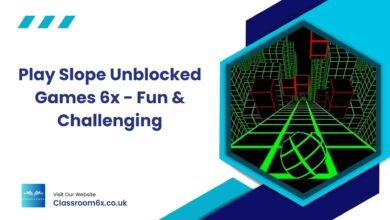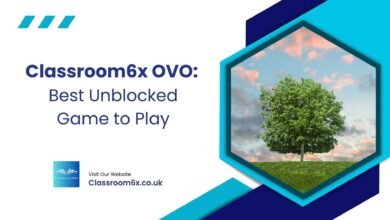How to Beat Escape the Room on Classroom 6x Easily in 2024
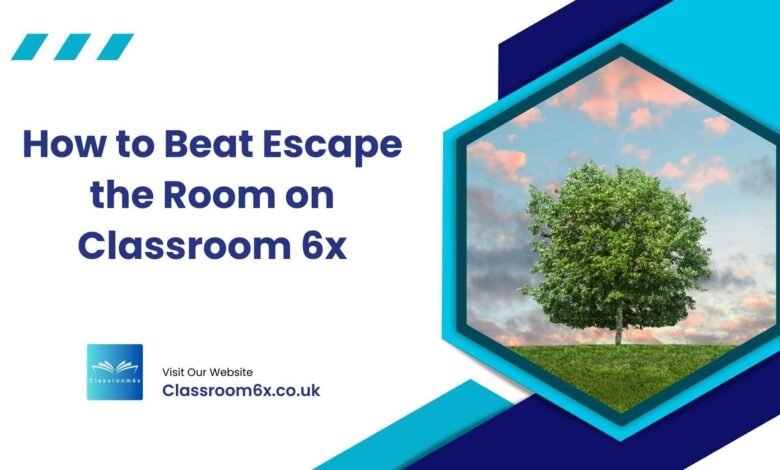
Escape the Room is now a hit in classrooms across the U.S. It gives students a fun way to test their problem-solving and critical thinking. Teachers are looking for new ways to make learning fun. So, learning how to beat Escape the Room has become key for teachers and students.
This guide will show you how to set up and solve Escape the Room puzzles in class. We’ll give you the strategies and tips you need to ace the Classroom 6x challenge in 2024.
Key Takeaways
- Discover the fundamentals of Escape the Room activities and their growing popularity in the classroom setting.
- Learn effective strategies for setting up and running an immersive Escape the Room experience for your students.
- Explore a real-world case study of the “Operation Bletchley 1945” Escape Room scenario and how to tackle its challenges.
- Uncover tips and techniques for solving Escape the Room puzzles, fostering critical thinking and problem-solving skills.
- Understand how to customize and adapt Escape the Room activities to align with specific subject matter and curriculum content.
- Discover the power of collaborative problem-solving and its impact on student engagement and learning outcomes.
- Gain insights into the future of Escape the Room in the classroom and how to stay ahead of the curve.
What is an Escape Room?
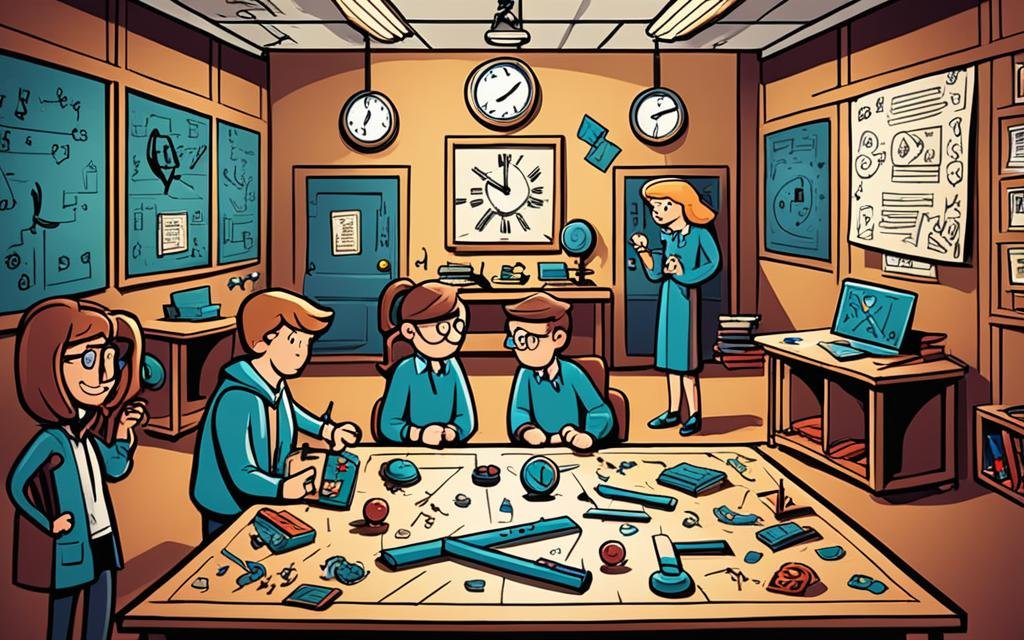
Definition and Overview of Escape Rooms
An escape room is a fun, interactive game where teams work together to solve puzzles and challenges. They have to do this within a certain time limit. These games test players’ problem-solving, creativity, and teamwork skills as they try to escape the room or achieve a goal.
Escape rooms have a story, clues, and props that make players feel like they’re in a different world. They need to use their brains, talk to each other, and work as a team to get through the challenges. This leads them to find the hidden solution.
Escape Rooms as Team-Building and Learning Activities
Escape rooms are not just for fun; they’re also great for team-building and learning. In schools, they can be made to fit the curriculum, making learning fun and interactive. Students get to use what they know to solve puzzles and missions.
- The Escape Classroom offers 5 different products for schools, focusing on creativity, innovation, critical thinking, problem-solving, communication, and teamwork.
- These activities usually last 45-60 minutes, with students in teams solving puzzles and challenges together.
- They’re designed to improve teamwork, problem-solving, and critical thinking skills in students. These are important skills for the 21st century.
Escape room-style activities make learning fun and engaging. They help students work together and understand the subject better. These exercises are a unique and memorable way to improve the learning experience.
Setting Up an Effective Classroom Escape Room
Creating a classroom escape room is a great way to make learning fun and challenging. It lets students solve problems and work together to escape a thrilling scenario. Here are the steps to set up a successful classroom escape room activity.
Pre-Class Preparation
Getting ready for a classroom escape room setup takes careful planning. Start by picking a theme that fits your lesson goals. Make a plan for the activity and collect all the materials you need, like “mission tokens” to hide around the room. Good planning makes the activity run well and makes learning more engaging.
Conducting the Activity
On the day of the activity, put students into teams and give them their first clue or task. As they find the puzzle-solving tokens and finish their missions, help them along the way. Make sure they work together, think critically, and talk things out as they try to escape the room.
Recent studies show that 86% of teachers think escape rooms help with critical thinking and communication. Also, 75% of students say escape room activities are the most fun part of class. Adding classroom escape room activities makes learning exciting and helps students develop important skills for the 21st century.
| Key Benefits of Classroom Escape Rooms | Percentage of Educators and Students |
|---|---|
| Enhance critical thinking and communication skills | 86% of teachers |
| Most engaging part of lessons | 75% of students |
| Effective in reinforcing material learned in class | 92% of educators |
| Improve teamwork skills | 67% of students |
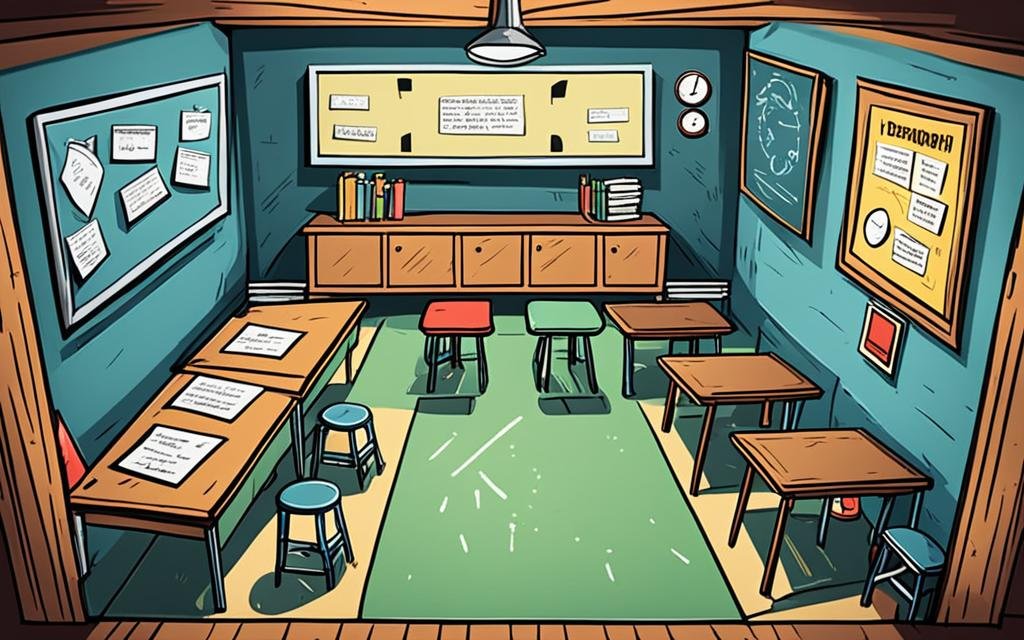
“Escape room games encourage critical thinking, teamwork, and communication skills, all of which are highly valued in the workforce.”
Case Study: Operation Bletchley 1945
The escape room “Operation Bletchley 1945” is a great way to make history come alive in school. It takes students back to World War II and the important work at Bletchley Park in England. They have to work as a team to defuse a bomb before time runs out.
The Scenario
Students go back to 1945 and become top codebreakers on a critical mission. The classroom turns into a Bletchley Park wartime scene with real artifacts and a countdown clock. They solve puzzles and challenges like the real codebreakers did during the war. All this, while working together to stop a disaster.
Preparation and Resources
Teachers prepare for “Operation Bletchley 1945” with a lot of work before class. This includes:
- Creating a timeline of Bletchley Park’s codebreaking history
- Designing puzzles that make learning fun, like decoding messages and solving math problems
- Collecting historical items and photos to make the setting feel real
- Decorating the classroom with items from the time to make students feel like they’re really there
This careful planning makes “Operation Bletchley 1945” a fun and educational activity. It combines solving problems with learning about history.
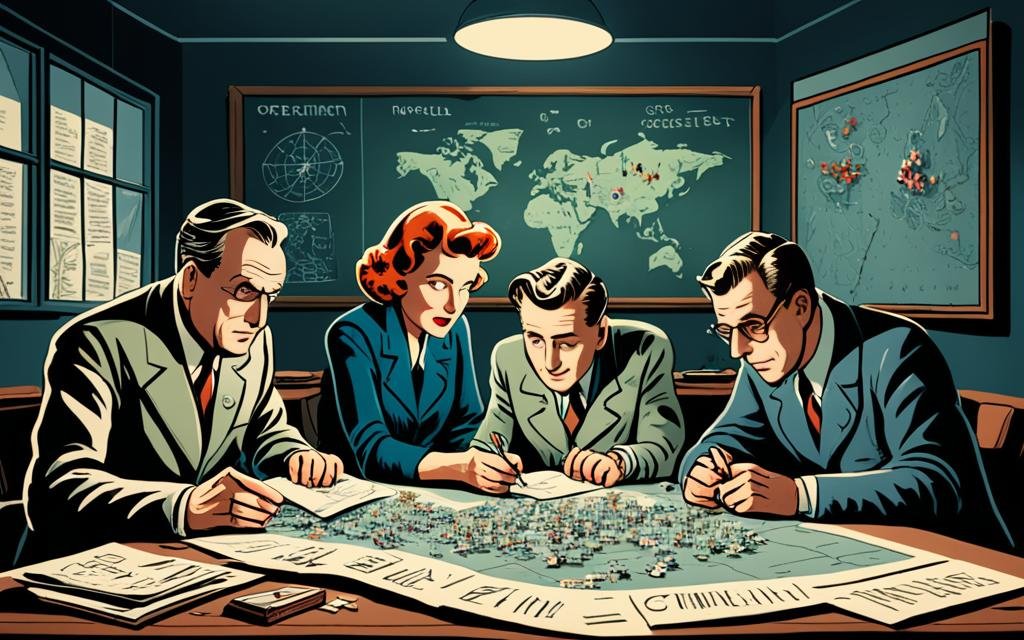
how to beat escape the room on classroom 6x
Escape room puzzles are a fun challenge that need critical thinking, teamwork, and problem-solving. If you’re facing the “Classroom 6x” escape room, these tips can help you win. They apply to any escape room challenge.
Tips and Strategies for Solving Puzzles
Begin by planning as a team before tackling the puzzles. A good plan boosts your chances of success. Look closely at the room’s details. Small clues can unlock big puzzles.
Encourage your team to think creatively about the objects in the room. Sometimes, the answer is not what you expect. Keep your items organized to help your progress.
Assign someone to watch the time and update the team. This keeps you on track and avoids running out of time.
- Communicate effectively and collaborate as a team
- Analyze the available clues and sources carefully
- Apply critical thinking and problem-solving skills
- Explore unconventional solutions and think outside the box
- Organize information and keep track of found items
- Monitor the time and manage it wisely
- Seek hints from the game master if needed
Developing Critical Thinking and Problem-Solving Skills
Escape rooms test your puzzle-solving skills and improve your brain. They boost critical thinking, logical reasoning, and problem-solving. These skills are key for school and work.
These activities promote teamwork, communication, and handling pressure. They’re great for developing these valuable skills in a fun way.
“The ultimate goal of escape room games is to have fun and enjoy the experience while testing critical thinking skills and enhancing problem-solving abilities.”
For students, teachers, or team-building experts, escape room puzzles are a great tool. They help build well-rounded people ready for today’s fast-paced world.

Enhancing the Learning Experience
Using escape room learning experiences can change the way we teach. By adding curriculum and subject matter integration to escape rooms, teachers can make learning fun and deep. This approach grabs students’ attention and helps them understand better.
The secret is finding the right mix of puzzles and learning goals. Design the escape room carefully to match the lessons you want to teach. This way, the activity supports and enhances the escape room learning experience in class.
Aligning with Curriculum and Subject Matter
Escape rooms make learning exciting and interactive. They work well with any subject, like math, science, or language arts. You can create challenges that match your lesson plans perfectly.
- Make puzzles that test students’ knowledge of important concepts or formulas.
- Use textbooks, lab tools, or stories in the escape room.
- Have students work together and think critically to solve puzzles and move forward.
By mixing the escape room learning experience with your curriculum and subject matter, you get a deep and engaging learning experience for your students.
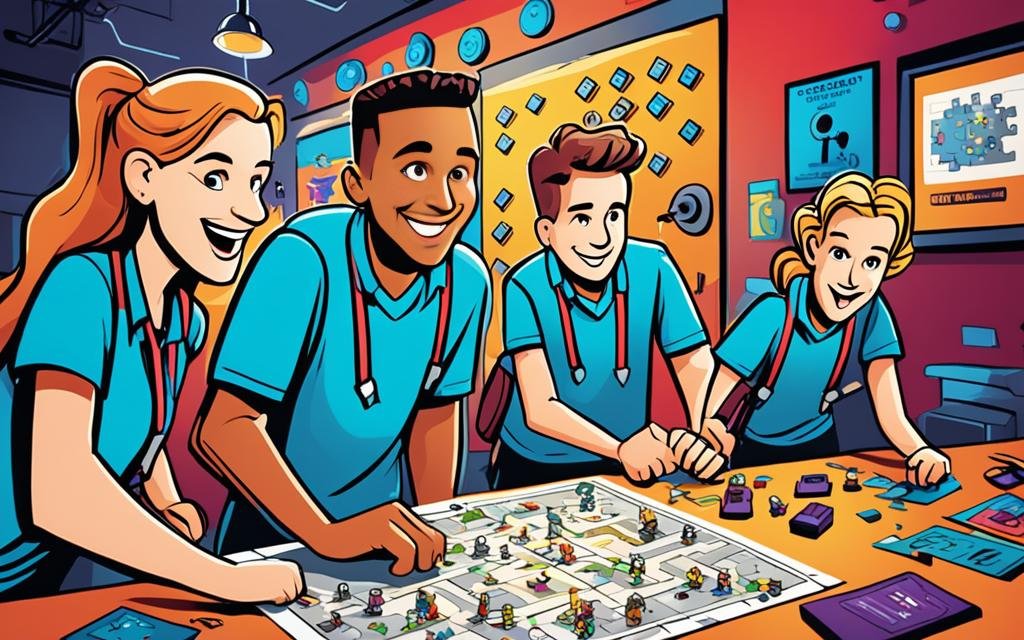
“Escape rooms in the classroom provide a unique opportunity to engage students in active, collaborative learning that reinforces key concepts and skills.”
Escape rooms can make students excited about learning. They help improve critical thinking and give students the skills they need for school and life.
Variations and Customization
Escape rooms are great for teachers who want to make learning fun for students of all ages and subjects. They can change the puzzles, themes, and goals to fit what students need and like. This way, teachers can make escape room activities that are perfect for their students.
Customizing for Different Age Groups
Escape rooms can be made for students from the early grades to high school. For younger kids, puzzles are simpler to help them learn to solve problems and work together. As students get older, the puzzles get harder, making them think more deeply and solve problems better.
Integrating Subject Matter Adaptations
Teachers can make escape rooms that match what they’re teaching in class, like history, science, math, or English. They can add puzzles that fit the subject, making learning fun and interactive. This way, students get to use what they know in a fun way.
For instance, a history escape room might have puzzles about a certain time or event. A science escape room could test their knowledge of science to move forward.
It’s important to balance learning goals with the fun of escape rooms. By designing puzzles and stories carefully, teachers can make escape rooms that are both educational and exciting. This helps students get really into their learning.

“Escape rooms provide a unique and engaging way for students to apply their knowledge and problem-solving skills in a dynamic, real-world context. By tailoring the experience to different age groups and academic subjects, we can unlock the full potential of this powerful learning tool.”
Collaborative Problem-Solving in Action
Escape rooms are more than just fun puzzles. They are powerful tools that help students learn by working together. Students learn important skills like critical thinking, teamwork, and puzzle-solving. They must work as a team to solve clues and unlock the room.
In an escape room, students talk and share ideas to beat the challenges. This way, they use their strengths together. It makes them think creatively and come up with new solutions. The need to escape makes them work as a team, building teamwork and friendship.
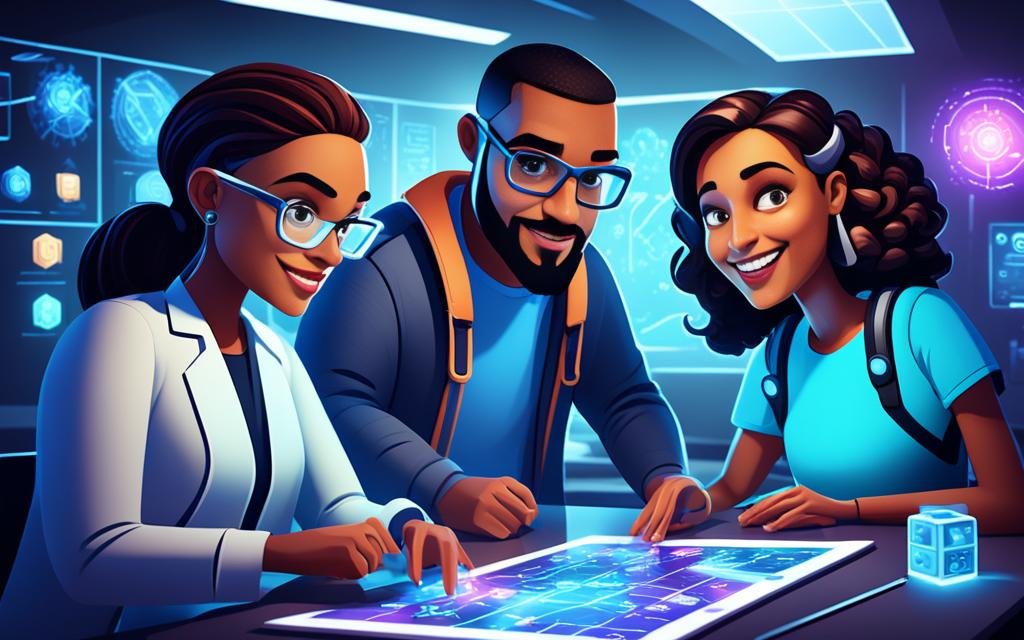
Escape rooms are also great for practicing critical thinking. Students face puzzles and must use what they know to move forward. This helps them think better and feel more confident in solving tough problems.
“Escape rooms are a brilliant way to get students to work together, communicate, and apply their critical thinking skills in a fun, immersive setting. It’s amazing to see the level of engagement and teamwork when they’re trying to solve the puzzle and ‘escape’ the room.”
Using escape rooms in class makes learning exciting and different from usual teaching methods. Through collaborative problem-solving, students gain skills that help them in school and their careers.
Conclusion
Escape room activities make learning fun and engaging. They help students learn by solving puzzles together. This approach boosts critical thinking and teamwork skills.
Teachers can use escape rooms to make learning fun and effective. Students get to solve mysteries and overcome challenges. This makes learning more memorable and teaches important life skills.
Interactive learning, like escape rooms, is changing education. It makes students more engaged and helps them remember what they learn. By using these activities, teachers can help students become better thinkers and leaders.








